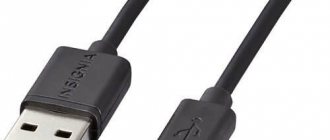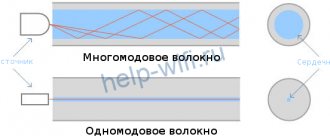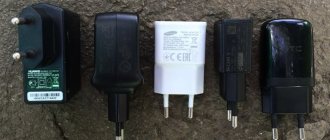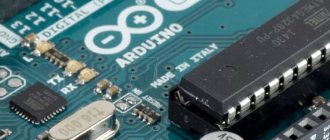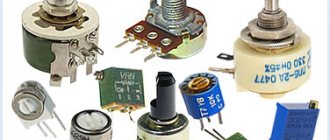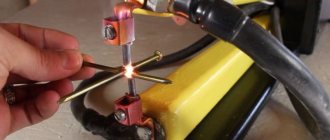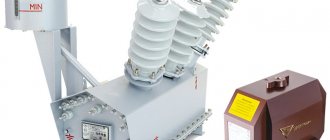In the modern world, there is such a stereotype that everything works “wirelessly”. Cell phones, home/work Wi-Fi networks and other gadgets. Base stations from which cellular communications operate, residential buildings, offices - for the most part, everyone has a “physical” connection via an optical cable. Yes, there are options for connecting over the air, but for now it is the optical cable that provides the highest transmission speed and the lowest latency under almost any weather conditions and over any distance.
Today, there are more than fifty different types of fiber optic cables on the Russian market. This quantity creates some difficulties in selecting OK for a specific project. You can speed up the selection process in our convenient configurator - Optical cable selection.
The main division of all types of optical cables occurs primarily from the conditions of their installation (Fig. 1). The main task is to protect the optical fiber from all external influences.
Rice. 1. Designs are OK
Optical cable for blowing into pipes
The method of installation in pipes is quite promising for reasons of convenience and practicality of the technology. The design of the cable is very simple (Fig. 2), glass fibers are applied to the core as additional strength elements, and an outer sheath is placed on top. The dense pipe protects the cable from possible mechanical damage. Recently, blowing microtubes into sewers has become a popular trend. A microcable has been developed for microtubes, where there is no additional protection other than the outer sheath. This option is smaller in size (by the way, in this option it is possible to use an optical fiber with a reduced diameter, 200-micron fiber SMF-28® Ultra 200, in order to also reduce the diameter of the modules in the optical fiber).
Rice. 2 OK for blowing into pipes
Subscribe to the VOLS.Expert channel
We show how to correctly install optical couplings and cross-connects, analyze common mistakes, and give useful advice to specialists.
YouTube
How an optical cable works and what you need to know about it
An optical cable (otherwise known as optical fiber, optical fiber cable or optical fiber cable) is a wire that transmits information signals in the optical wavelength range using a light guide. This method of signal transmission has a number of advantages that increase its popularity among users.
It has low signal attenuation, good anti-interference, high throughput, takes up little space, light weight and durability. The price of such cables is still higher than their copper counterparts, but it is constantly decreasing.
How an optical cable works and its main technical characteristics
Optical cables can be classified:
- by material: GOF (quartz glass) and POF (plastic);
- by placement: external (in the air or under water) and internal (indoors);
- according to the environment in which the optical cable is installed: suspended (with a cable or Kevlar coating), for the ground (metal armor), for sewers (corrugated metal armor), underwater (complex multilayer sheath).
An optical cable includes one or more optical fibers and protects the core from mechanical damage, water, temperature changes, rodent damage and shock. The total number of light guides in a cable can be up to 288; the most popular are 32, 48 and 64 fibers. Composition of fiber optic cable:
- the cable, which gives strength and rigidity to the structure, is made of plastic or metal coated with a polyethylene cover;
- light guides: fibers made of glass or plastic (can be transparent or colored for marking);
- tubes in which the light guides are laid (4-12, if less is needed, then black non-working fibers are laid to maintain dimensions), filled with hydrophobic gel;
- a shell moistened with a hydrophobic gel into which tubes are placed (from 1 or more);
- moisture protection shell made of polyethylene (not always used);
- armored shell: Kevlar covering: a layer of steel or iron fibers, sometimes fiberglass;
- external protection – a plastic sheath to protect the cable from external influences.
The designs and types of optical cables that must be used in each specific case are determined by the tasks and many other parameters, and therefore may vary. The simplest one is light guides in plastic tubes and a common shell.
The most complex is the wire that is laid under water, consisting of many armoring and sealing protective shells. The materials used in this technology provide the highest data transfer rates (up to 100 Gbit/s) without amplifiers or repeaters over tens of kilometers (and with the help of amplifiers over thousands of kilometers), accurate data transmission almost unchanged with very low losses, protection against distortion, including as a result of weather conditions.
Optical fiber is not affected by electrical devices and the wire itself does not generate electromagnetic radiation.
Singlemode and multimode wire, how to choose
The light guide is the main light-transmitting part of the fiber; it consists of a core (otherwise called core or core) and a damper that prevents radiation from leaving the core. Both the light guide and the damper are made of the same material, and the refractive properties of the core material are higher than those of the damper, which ensures complete reflection of the signal within the existing boundaries.
There are two main types: single-mode optical cable (core diameter 9 microns) and multimode optical cable (core 50 or 62.5 microns). The damper diameter is always constant - 125 microns.
Single-mode fiber classes: OS1 (for wavelengths 1310 nm or 1550 nm) and OS2, formerly LWP (for channelized wideband transmission from 1280 nm to 1625 nm).
OS2 class provides the maximum data transfer speed - more than 10 Gbit/s. Main advantages: low signal attenuation and wide bandwidth.
Multimode fiber classes: the simplest OM1 (62.5 microns) and OM2 (50 microns), the new high-speed OM3 and OM4 can operate at speeds of 100 Gbit/s. OM3 is supplemented with a VCSEL vertical cavity laser; OM4 uses FP (Fabry-Perot) lasers and DFB (distributed feedback) lasers. Multimode fibers allow a wave to propagate simultaneously along several paths, which causes their main disadvantages: greater signal attenuation and signal dispersion (overlap).
When choosing a cable, you must consider its characteristics. At the same time, we can clearly conclude that for speeds above 10 Gbit/s for any distance, single-mode fibers are beyond competition. For distances of 550-1100 m, one of the classes of multimode fiber can be used.
The price of multimode cable is higher, since the cost depends on the diameter of the core, but equipment for single-mode systems is significantly more expensive. Therefore, when choosing and assessing the cost, it is advisable to compare not only the cost of the wires, but also the cost of the corresponding equipment.
Optical cable types and types of connectors
An optical cable connector is a connector for connecting a cable to equipment. For single-fiber cables, the following type of optical cable connector is used: standard size 1.25 mm (LC, MU, E2000) or 2.5 mm (FC, ST, SC), non-standard shapes of other diameters are also possible.
For different numbers of fibers, duplex for 2 fibers (SMA, BICONIC, DIN) and ribbon for more than 4 fibers (MTP/MP) are used. Each type of connector occupies its own market segment and has its own advantages and disadvantages. Here are examples using the main types of optical cable connectors:
- SC is the main type for structured cabling systems and telecommunications, showing high speed, connection quality and ease of use, but is not strong enough and is susceptible to damage due to vibration;
- FC - has a round cross-section, often used in measuring equipment, the metal body ensures durability and reliability, but has a more complex structure;
- ST - mainly used for multimode cables, metal casing, but average connection quality characteristics;
- LC - Universally used in computer equipment, the convenient plastic design makes it easy to use, but is not durable and requires careful handling.
The most practical types of fiber optic cable connectors are TOSLINK and Mini TOSLINK. TOSLINK is a commonly used interface that can be used to connect household equipment, stereo and home theater systems, Internet connections and computer networks, game consoles and other cases.
It belongs to the Japanese company Toshiba, which led to its name: TOS - Toshiba and LINK - connection (English). Good bandwidth guarantees excellent sound quality. Mini TOSLINK, for example, CLIFF FM65010 - with a smaller connector. Used in mobile gadgets and various electronic devices.
Using fiber optic cable
Fiber optic cables have found their use in computer networks, telecommunications technology, medical care and industry. The use of such wires on communication lines is due to their high degree of protection; unauthorized access to information without damaging the cable is impossible.
Such wires can be used in the most difficult conditions, providing high quality communications even at extremely low or, conversely, high temperatures, and are not affected by electromagnetic interference.
Optical fiber has proven to be a successful solution for sensors for monitoring temperature, voltage, chemical composition and other indicators. It is also used in hydrophones, which are used to measure sound and ultrasound in sonar and seismic activity measurement devices.
Instruments using optical fiber are successfully used in the oil industry to measure temperature and pressure in wells, as the material can withstand high temperatures. Sensors using optical fibers are used in mechanical engineering, aircraft construction and spacecraft construction, for example, to measure magnetic fields and currents.
Optical fiber is widely used in lighting: for decoration in stores, in X-ray machines or for additional illumination in various fields of medicine during operations and diagnostics. The property of conducting light has been used in modern alarm systems: interruption of the light flow is a command for a sound signal or other actions.
In addition, optical fiber has not only found practical applications, but is also used in art to create individual works (for example, using fiber with a side section) or special lighting of entire halls.
What to look for when choosing an optical cable
First of all, you need to focus on the device connector. You also need to consider:
- length: it is necessary to study the instructions of the device; if a specific cable length is indicated, then this condition must be observed;
- frequency: the optimal value is 9-11 MHz, the quartz glass core makes it possible to operate at higher frequencies, while plastic does not allow the use of high transmission frequencies. The latter are more cost-effective, but lower in quality. It is necessary to take into account the capabilities of the main device, and only the desired result;
- where it will be laid: external or internal laying will determine the required design features. A cable for indoor use must have dielectric reinforcing elements and not support combustion, and for external installation, a reliable sheath is essential that protects from external influences: bends, pressure, shocks and especially from pests.
At the same time, it is very important to choose the right manufacturer, which is very difficult in modern conditions, since there are a lot of offers. You definitely need to pay attention to the technical characteristics: fiber type and size, attenuation, etc.
Connecting an optical cable
In theory, connecting an optical cable is quite simple: insert the optical cable plug into the optical cable connector on the equipment. But when laying it, it is necessary to take into account that such a wire cannot be bent along a small radius. It does not tolerate strong bends, since the core consists of a brittle material.
For example, when installing an audio system using a TOSLINK cable, severe deformation breaks the core, which makes the cable damaged and its further use impossible. Optical fiber cannot be connected by conventional soldering or twisting; glass must be welded or special connecting elements must be used.
It can be repaired, but the price will be higher than buying a new one. Before installation, you must remove the protective shields from the connectors. In the device from which the signal comes (if any), place one plug of the optical cable into the connector marked OPTICAL OUT, and in the device receiving the information, into the OPTICAL IN (or SFP) connector, place a plug on the other side of the wire.
Optics, HDMI or RCA, which is better?
Everyone wants to fully relax at home. For many it's music or watching a movie. The quality of the sound is very important. All three types of connections (optical, HDMI and coaxial RCA) are digital.
The main disadvantages of a coaxial connection are that electrical noise affects all devices, including the amplifier, and low bandwidth, which makes it impossible to fully appreciate the high-quality formats Dolby TrueHD, DTS-HD Master Audio, Dolby Atmos and DTS:X. HDMI does not have such disadvantages, but the cable length is very limited - from 2 meters or more the high-resolution signal will be lost.
When using optical cables with TOSLINK and Mini TOSLINK plugs, noise from any source cannot affect glass or plastic, since the signal is transmitted as a light wave. Therefore, an optical home theater cable (instead of HDMI or RCA) will significantly improve the signal quality.
What is the price of an optical cable?
The price of optical cables depends on the type of wire according to the installation method, the number of fibers, the material and quality of the core, protective sheaths, the presence of armor and length, as well as the type of connectors and other technical characteristics.
It is necessary to study the parameters of the connected devices in order to select the cable as accurately as possible and use all the capabilities of the available devices.
DK-2533-02-5 Light guide patch cord; OM5; LC/UPC,both sides; 2m; LSZH
FP5LS15 Light Guide Patch Cord; OM5; LC/UPC,both sides; 15m; LSZH
Optical cable for installation in cable ducts
When laying in cable ducts, there is a need to protect the cable from rodents. Therefore, the cable design provides armor in the form of corrugated steel tape, wire armor or glass fibers (Fig. 3). There are options both with and without an intermediate shell. It is possible to use two additional steel wires in the OK design, acting as a load-bearing element.
Rice. 3 OK for cable ducting
Singlemode cable
The light guide, which transmits one beam of light (called a mode), has a core with a diameter of less than 10 microns. In cables with a small cross-section, signal propagation is little affected by mode dispersion (scattering), the magnitude of which is directly proportional to the diameter of the core. Low dispersion helps transmit data over long distances without signal attenuation. Accordingly, a large number of repeaters is not required. The throughput of such cables exceeds 10 Gbit/s.
Single-mode cables are divided into two classes based on fiber type.
- Cables with single-mode optical fiber complying with ITU-T recommendation G.652.D / G.657.A - fiber with low bending losses, i.e. fiber with reduced sensitivity to bending.
- Cables with single-mode optical fiber with non-zero dispersion shift, complying with ITU-T G.655 recommendation. Designed for backbone fiber-optic data transmission systems with DWDM wavelength division multiplexing, operating in the C- and L-bands.
Optical cable for laying in the ground
The most severe option for laying a cable is directly into the ground without any additional protection (Fig. 4). Optical cables in their design have armor in the form of galvanized steel or rope wire, one or two layers, depending on the required characteristics. Provides protection from both transverse compression and tensile loads.
Rice. 4 OK for laying in the ground (wire armor)
When a cable with similar characteristics, but at the same time completely dielectric, is needed, armor made of fiberglass rods is used in the design instead of wire (Fig. 5).
Rice. 5 OK for laying in the ground (dielectric)
By purpose
Experts distinguish several types of fiber-optic cables according to their intended purpose. There is a similar division according to the installation method. In principle, this is the same thing that needs to be taken into account when choosing cable products. The main difference between different types of fiber optics is their design features, for example, the parameters of the outer shell, the presence and material of armor/strength elements, fire resistance, and level of protection from moisture.
For installation inside buildings
Fiber-optic cables inside buildings are installed in the space of cable trays and cable channels from optical cross-connections to the connection points of subscriber devices. The outer shell of the FOC is made from materials with a reduced level of smoke emission and flame retardant in order to comply with fire safety requirements. Armor and power elements are usually absent. Protective functions are performed by reinforcement with Kevlar threads.
The cables are characterized by minimal weight and small bending radius. The number of optical fibers can vary from 2 to 24. In the case of installation in rooms with an aggressive, fire-hazardous or explosive atmosphere, specialized fiber-optic cables are used.
For installation in sewers
For installation in sewers and collector structures, fiber-optic cables with armor that can withstand high levels of tensile and crushing loads are in demand. Types of booking:
- tape;
- wire - with 1 or 2 layers.
More often, tape armor is used, which is made in the form of a smooth or corrugated steel tube of 0.1 - 0.2 mm. Corrugated tape is more effective in resisting rodents and increases the flexibility of the cable product. Solid wire armor is selected in case of particularly difficult environmental conditions.
Particular attention is paid to the cable sheath, which is made of non-flammable high-density polyethylene, which can withstand significant temperature changes. Optical modules must be protected with a layer of water-repellent gel. This solution has proven itself well in the humid atmosphere of sewers and sewers.
For laying in the ground
Laying in the ground involves operating a fiber optic cable in an extremely aggressive external environment and the risk of critical mechanical impacts. There are frequent cases of damage to the fiber optic cable as a result of the work of heavy construction equipment, mistakenly organized in the security zone along the route of the fiber optic communication line.
To minimize damage to optical fibers, cables with powerful wire armor, having one or two layers, are used, very rarely with tape armor. This choice becomes clear if we consider that wire armor provides:
- maximum tensile load - up to 80,000 Newton/100 mm;
- permissible crushing force - up to 4,000 Newton/1 cm.
For belt armor, these figures are much lower: 2,700 Newton/100 mm and 500 Newton/1 cm, respectively.
The safety of optical fibers from moisture penetration, especially during rainy periods, is ensured by reliable insulation of optical modules with a hydrophobic gel filler
Submarine optical cable
An underwater fiber optic cable (Fig. 6) is required for laying in offshore areas (coastal shelf and deep-sea), including in all types of soils, including rocky and subject to permafrost deformations, in swamps, at crossings of navigable rivers and other water barriers, in cable ducts, pipes, blocks, trays, tunnels, overpasses, bridges, collectors.
Rice. 6 Submarine optical cable
The design of such a cable has additional protection against water penetration in the form of an aluminum polymer tape.
Use of fiber optic cables in power lines
Power lines can use different types of cables associated with fiber optic cables. Many factors influence the choice of cable type. The most important of them are: the voltage in the line, the presence of a lightning rod, the type, condition and maximum distance between the supporting structures of the line, the location of the line in a specific climate zone (landing). Each type of pipe has a specific method of suspension on supporting structures.
Cable accessories
To suspend different types of optical fiber cables in power lines, it is necessary to use the appropriate accessories for that type of conductor. The most popular cables used for hanging wires are braided steel wire and additional hardware that allows them to be secured to supporting structures. Fiber optic cables almost always require active anti-vibration protection, which eliminates the danger caused by so-called wind vibrations. The most commonly used dampers are the Stockbridge type and special spiral dampers for ADSS cables. Optical connections are made by welding them, then they are placed in special sealed distribution boxes (sleeves) fixed to the supporting structures of the line.
Optical cable for suspension
The most common method of building fiber optic lines today. The cable must withstand tensile loads along its entire length. Optical cables for suspension are of the “8” type (Fig. 7) and round (Fig. 9).
The cable must withstand tensile loads along its entire length. Optical cables for suspension are of the “8” type (Fig. 7) and round (Fig. 9).
Optical cables of type “8” have a metal (Fig. 7) or fiberglass cable (Fig. 8) in their design. The fiberglass cable is completely dielectric (Fig. 8).
Rice. 7 OK for suspension (with external power element, metal cable)
Telecom operators are gradually switching to round self-supporting optical cable (Fig. 9) due to some disadvantages of the “8” cable. You can read more about the shortcomings in the article about the basic principles of selecting trunk optical cables.
Rice. 8 OK for suspension (with external power element, fiberglass cable)
Suspended self-supporting cable or self-supporting non-metallic optical cable (OKSN). This cable is available in both aramid and glass fiber versions. Cables made with aramid threads are smaller in diameter and lighter compared to glass fibers. Also, aramid threads have a two-fold margin of tensile strength in relation to the maximum permissible loads. Self-supporting cable on aramid threads is certified for use at the facilities of JSC FGC UES of Russia and JSC IDGC Holding, but on glass threads it is prohibited.
Read more about the application and installation features of the OKSN cable.
Rice. 9. Suspended self-supporting OK
How is installation carried out?
Laying optical cables is almost no different from that when using electrical cables. It must be taken into account that optical fiber is a strong but fragile material. When laying, the maximum bending angles must not be exceeded. The cables are supplied wound on drums that have considerable weight, so it is necessary to ensure that there is no damage and the continuity of the fiber. On an optical cable length of up to 2 km, continuity can be checked with a conventional laser flashlight.
The cable is then pulled along the route. The pulling force should not exceed the value specified by the manufacturer. The connection points must be in accessible but protected from external influences.
The greatest difficulty is connecting the ends of the optical cable for subsequent welding. To do this, the cable is cut and freed from hydrophobic material. The stripped ends are adjusted (aligned) under a microscope and welded by heating with an electric arc. Modern welding machines are fully automated and perform this operation with high quality.
Optical cable built into lightning protection cable (OPGT)
This is a separate category of optical cables that are used on overhead power lines with voltages of 35 kV and higher (Fig. 12). The OPGT structures are completely metal.
Rice. 12 Lightning wire/OCGT
Depending on the required technical characteristics, OPGW can be of different designs in the core design:
- OKGT-Ts - optical cable built into a lightning protection cable with a central module;
- OKGT-TS-A - optical cable built into a lightning protection cable with a central module clad in aluminum;
- OKGT-S is an optical cable built into a lightning protection cable with an optical module in a layer.
If we use an OKFP (optical cable built into a phase wire), we get a “two in one” product: transmission of electrical energy and a fiber-optic communication cable line. Read more about OKFP in our article.
Using OPGT and OKFP designs, it is possible to monitor power lines.
Where a communication line has already been laid and protection against lightning strikes is required, GTK is used - a corrosion-resistant lightning protection cable.
By type of fiber
Based on the type of optical fiber, fiber optics are divided into single-mode and multimode. Mode refers to the propagation trajectory of a light beam inside a light guide. OBs of these species differ in the diameter of the core and shell.
The light beam is introduced into the optical fiber in one of two ways:
- at zero angle - single-mode fiber. Only one mode arises, propagating in a straight line;
- at a slight angle - multimode fiber. Many modes are formed, which propagate, reflecting repeatedly from the shell, and reach the receiving point in different times.
Scheme for introducing a light beam into an optical fiber
Fiber optic cables with single-mode fibers provide increased transmission distance without signal recovery and better throughput. For comparison:
- single-mode fiber - 100 km, up to 200 Tbit/s;
- multimode fiber - 500 m, up to 10 Gbit/sec.
The conclusion is obvious about the effectiveness of using single-mode fiber-optic cables on long-distance communication lines and connecting remote segments of high-speed information networks. Multimode fiber optic cables are used in creating local cable networks in a small area.
